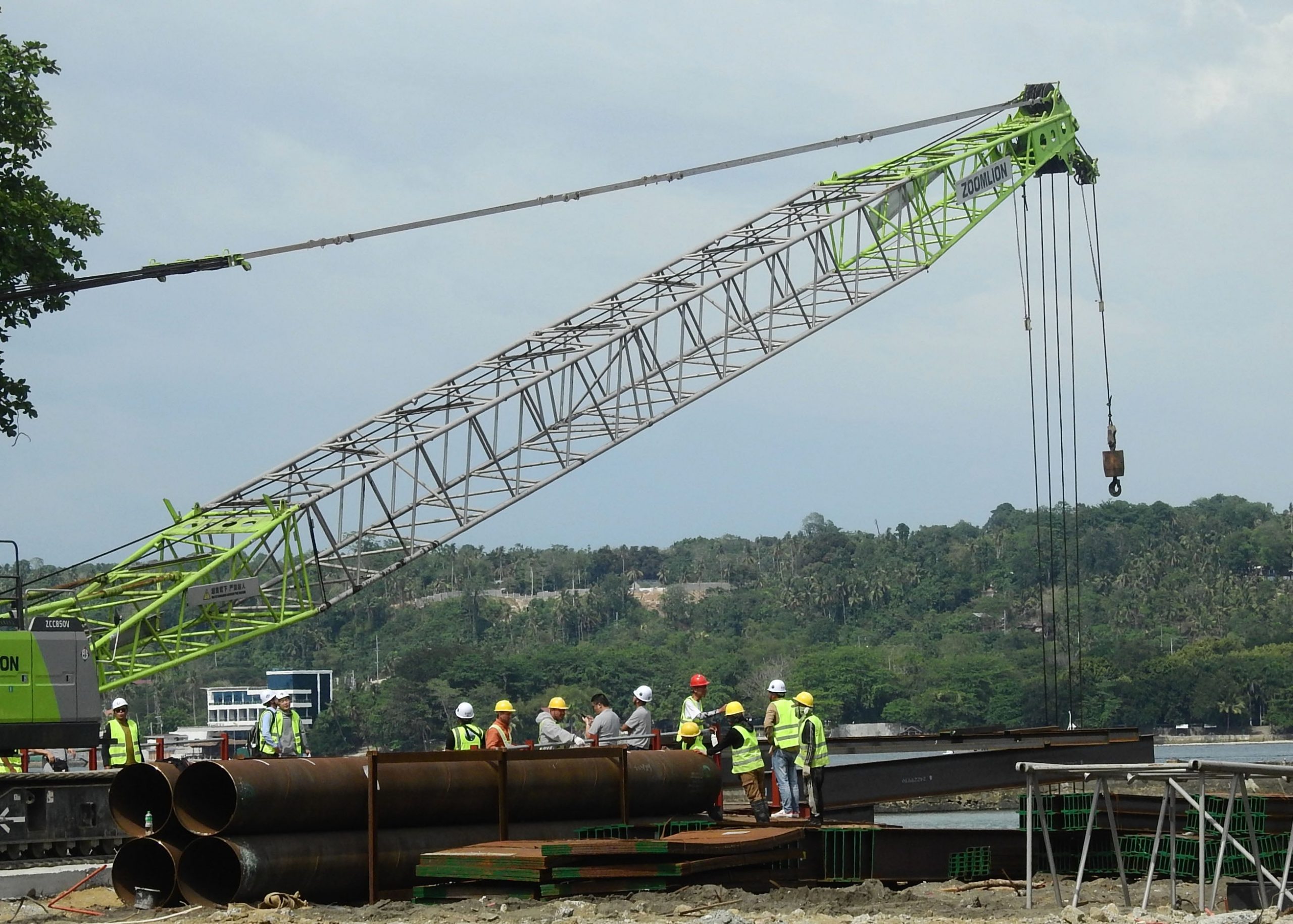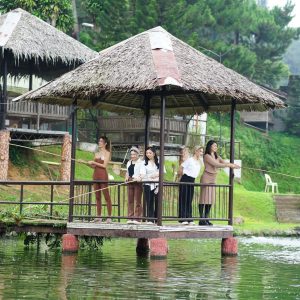PARADISE Island Park and Beach Resort is facing the biggest challenge in more than 40 years of existence as it closed 20 of its total 80 rooms while workers ramped up ground-clearing activities to prepare for the Samal Island-Davao Bridge Connector (SIDC) project.
The establishment, along with the adjacent Costa Marina Beach Resort, has a pending mandamus and prohibition case before the Supreme Court after losing its petition at the Court of Appeals.
For environment-related issues, the mandamus is a legal remedy that compels a government agency to perform its duty to enforce environmental laws.
However, clearing operations for the P23-billion bridge will continue until the Supreme Court hands out an injunction. The 3.98-meter, four-lane bridge carves a path across the Lucas-Rodriguez’s property in Barangay Limao, much to the dismay of both families.
Meanwhile, resort manager Julian Rodriguez said Paradise is in survival mode as they deal with “a lot of air pollution, water pollution, noise pollution and other pollution.”
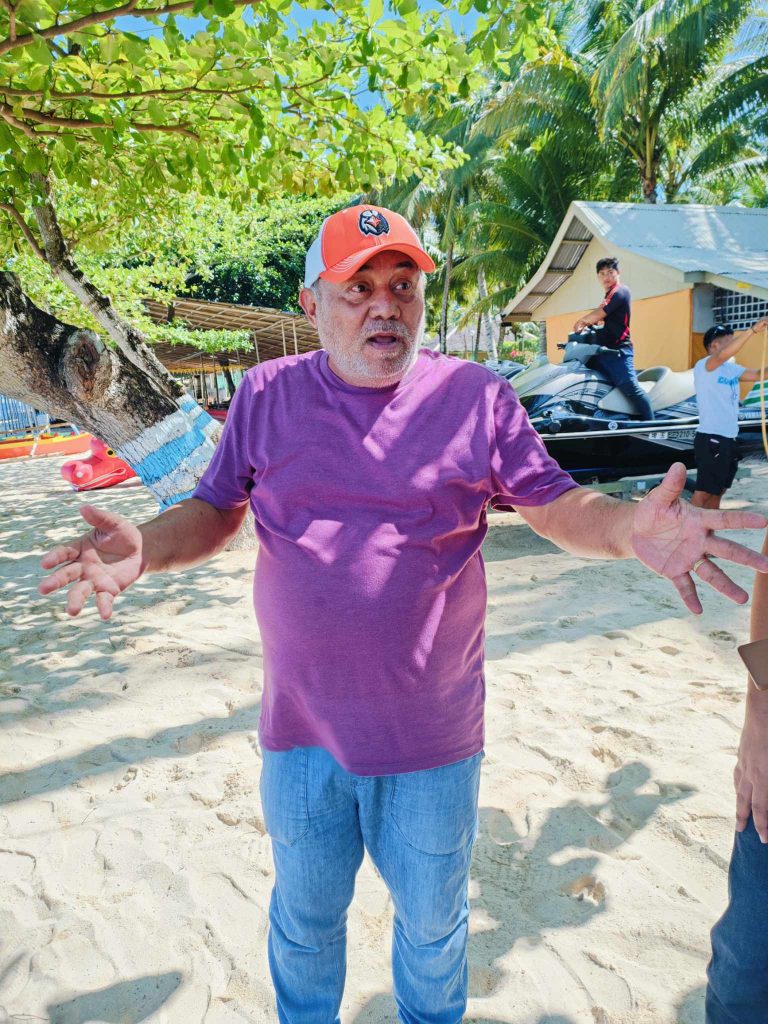
“We have not experienced this before,” he lamented.
The Rodriguez-Lucas family has been waging an uphill battle to relocate the SIDC’s alignment to another area, supposedly to avoid destroying the 400-year-old Paradise Reef, right where the bridge will be constructed.
Both families even offered their property in Barangay Caliclic for free to serve as the new landing site for the bridge as fewer corals and marine life will be affected. They claimed that JICA also recommended Bridgeport as the ideal spot for SIDC because of the shorter distance and more economical cost.
An independent study commissioned by Paradise Resort revealed that the reef spanned 300 meters long and 50 meters wide. Researchers also documented 100 species of fish and another 100 species of hard and soft corals.
Nonetheless, local government officials served the families with the writ of possession on Jan. 30, 2024. The document gave the Department of Public Works and Highway control over a portion of the land for the bridge.
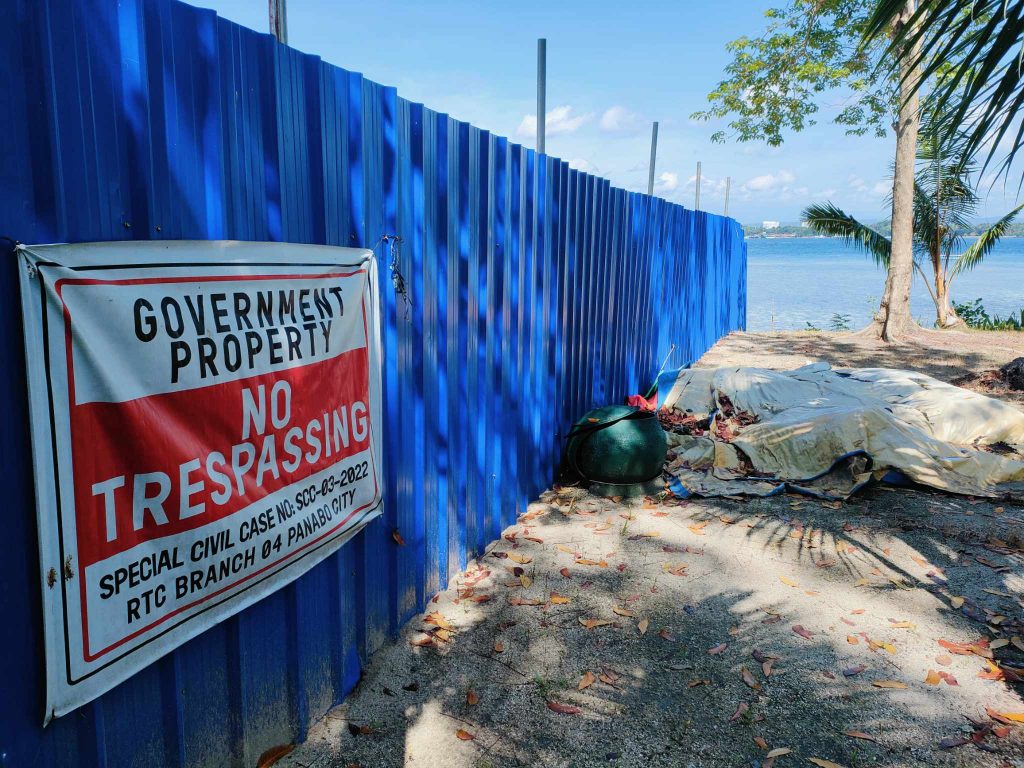
No stopping SIDC
Engr. Joweto Tulaylay, SIDC project manager, told reporters in a press conference at the DPWH XI office on April 23, that construction will remain in full swing until they receive the TRO. He said they are required under contract to hire local laborers to boost the island’s economy.
As to the foreign workers seen on site, Tulaylay said they need the Chinese’s expertise in building the bridge. However, under the contract terms, the ratio of the labor pool is 70:30 in favor of Filipino workers.
At the end of April and the first week of May, workers would have started with the land viaducts for both the landing sites in Davao City and Samal City. The viaducts will connect the bridge to the land structure.
The original timetable for extradosed bridge’s turnover was in 2015 after six years of construction. However, the global pandemic and right-of-way problems pushed the project back.
“Hopefully, according to the contractor, we can finish as early as the first quarter of 2028. But maybe they can still finish it in 2027,” he said.
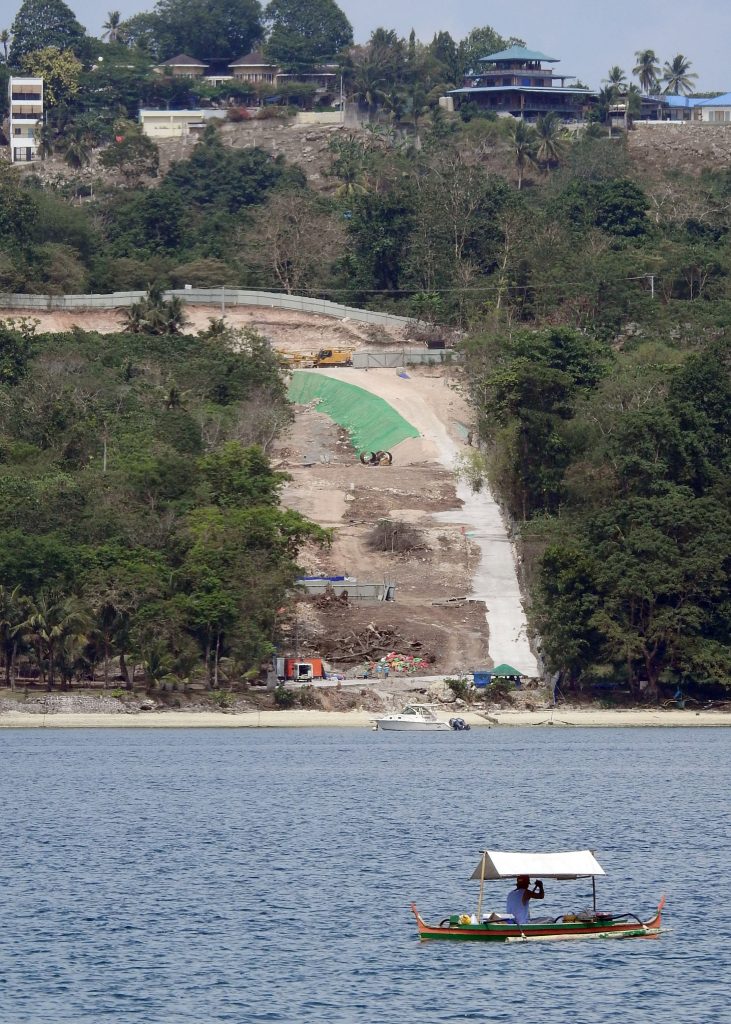
The official said they work closely with the DENR and Environment Management Bureau and will comply with all their requirements to ensure the ecological damage is kept to a minimum. They also formed a multipartite monitoring team representing government agencies, businesses, and civil society organizations that will continue to track the bridge’s progress and ensure the contractor complies with all laws.
But he said they have to weigh the potential harm with the long-term benefits of the bridge as connecting the island to Davao City will drive employment, tourism, and progress to Samal. He said a substantial number of Samal residents work in Davao City, which means riding the ferry daily.
The movement of people and goods is heavily dependent on the ferries that navigate between Davao City and Samal Island. According to the Philippine Ports Authority data, a total of 2.5 million passengers took the ferries in 2022.
Environmental concerns
Dean Ortiz, DPWH XI public information officer, said they are very aware of the potential environmental impact that a mammoth project like the SIDC would cause. It is for this reason that the bridge’s designers opted to use steel bored piles instead of the traditional concrete pile in laying down the structure’s foundations.
“We use bored piles to drill a hole into the ocean floor. After drilling, we bring down a steel cage before pouring the concrete, so it’s self-contained,” he said.
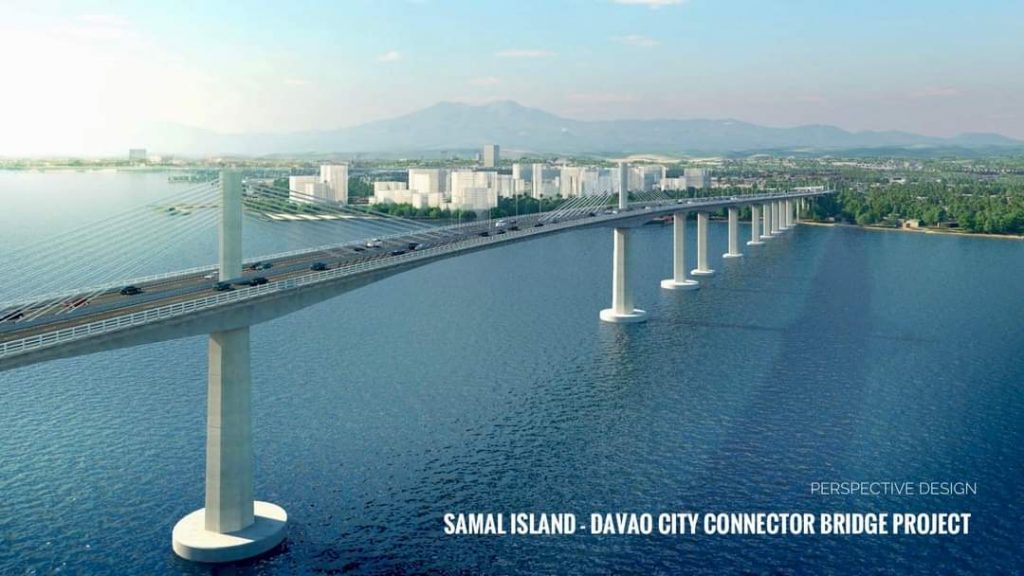
The 3.98-kilometer extradosed design bridge is expected to finish construction by the first quarter of 2028. DPWH
In contrast, the original design was potentially very destructive since each pier and foundation can be as large as a basketball court. The tensile strength of steel also allows the contractor to drive the hollow pipe deeper into the marine floor.
Ortiz also explained the decision to choose the Lucas-Rodriguez landing property from the other proposed landing sites—the northern corridor, north of Sasa Port, and the central corridor. For one, all the alternative sites were identified by the Department of Environment and Natural Resources as protected under the National Integrated Protected Areas System Act of 1992 or NIPAS.
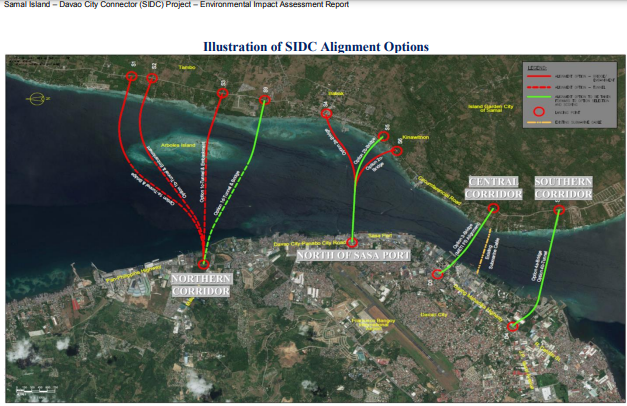
“The southern corridor where the Samal Bridge will be constructed lies just outside the NIPAS,” he said.
Sun, sea, dust, and debris
Meanwhile, Rodriguez insisted the resort owners are not against the mega-project. In fact, he is the first to admit they would theoretically be the biggest beneficiary once the bridge opens.
To illustrate, Samal Bridge is sandwiched between Paradise and Costa Marina, so they have the first crack at walk-in and casual beachgoers. He also acknowledged the positive impact of the bridge to Samal Island, long hounded by underdevelopment since its economy relies heavily on tourism and agriculture.
Tourist arrivals peaked in 2019 when the Island Garden City of Samal registered 1.9 visitors, according to tourism officer Jennifer Cariaga. Tourism only bounced back in 2022 when the island welcomed 750,000 tourists after the pandemic brought the industry to a halt in 2020 and 2021.
Rodriguez seemed resigned to the fact their customers and staff would have to live with dust, debris, and noise pollution for the next three to four years or until the bridge opened.
As hopes dim in their fight to realign the bridge, Rodriguez said they will continue to dialogue with DPWH and other concerned agencies to carve a win-win solution. “The dialogues have never stopped. It’s the only thing we can really do,” he said.

